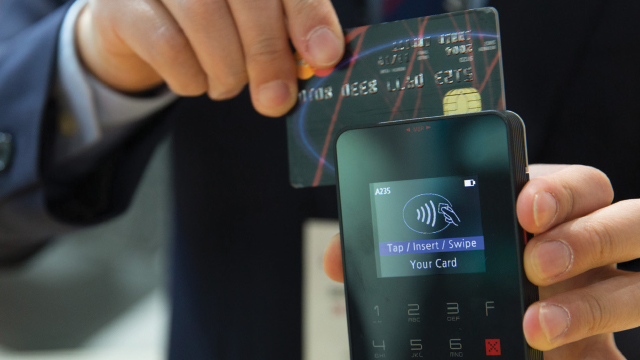Truth be told: Busting myths around supply chain, payments, digital & e-commerce

Retail
250 week ago — 8 min read
Background: Shiv Joshi, in his previous article busted myths around strategy, marketing and branding in retail. In this article he explains the truth behind the common myths surrounding the supply chain, payments, digital and e-commerce.
SUPPLY CHAIN / LOGISTICS

Myth: Complexity equals forecasting accuracy in Supply Chain Management
Fact: On the contrary, the number of variables affects accuracy. The more the variables, the higher are the chances of mistakes. Moreover, it may lead to long-term trends being missed. Also, when there is excess data, decision making suffers as individuals reviewing the data keep looking for ‘one more example’.
Supply chain capability depends on People, Process, Systems and Data. All four are required to make supply chain work.
Myth: For efficient last-mile, it is important to develop in-house capabilities
Fact: In the Omni-channel world, there is a race to shorten delivery cycles. To achieve that, retailers are trying to develop in-house capabilities for better control and efficiency. The underlying belief being that external partners/agencies may not be able to keep up with their promises and are difficult to control. However, a good partner has an obligation to be transparent and will prioritise accountability and efficiency to help maximise its clients’ ROI.
Myth: Software is easier to implement or integrate if it is from the same provider
Fact: According to Lora Cecere, Founder of Supply Chain Insights, software vendors perpetuate this myth. It leads to companies picking a more expensive solution, that may not fit their needs and may be harder to implement. Often, there are cheaper, more efficient alternatives available that are compatible with existing systems.
Myth: Deploying more people improves productivity
Fact: “Increasing the number of people beyond a certain limit creates more problems. After a certain threshold, efficiency becomes more important than head count,” opined Suresh Chugh, Head of Logistics, Raymond Apparel Ltd.
Myth: Technology is the best source of Supply Chain Improvement
Fact: Supply chain capability depends on People, Process, Systems and Data. All four are required to make supply chain work. Introducing new technology (which comes under systems) alone will not work if it doesn’t reflect strategy and is not supported by the right processes.
Having the right people or a process tweak can be a source of significant innovation too. Even the best system will not help an organisation make decisions regarding exceptions such as capacity constraints, stock-outs or delivery delays. These decisions should be driven from your supply chain policies, which in turn are guided by organisational strategy.
Also read: 10 retail trends to watch out for
PAYMENTS

Myth: Customers don’t really care about payment options available when they buy
Fact: Convenience is the currency of the century. Every customer has different preferences with regards to mode of payments. Cash, credit cards, debit cards, mobile wallets and Unified Payments Interface (UPI) are some of the options that every retailer must consider. There has been a steady shift from cash to digital modes of payment.
A UK-based payment firm found that almost 50 percent of consumers will end a transaction if their preferred payment method is not available.
In fact, an analysis of the data from Reserve Bank of India (RBI), the National Payments Corporation of India (NPCI) and industry for the period from April 2018 to March 2019 by a leading daily shows that more and more people are using UPI platform for transactions. It is even overtaking e-wallets in terms of the value of transactions done, and market share in specific areas.
According to the World Payments Report customers don’t stick to one method of payment across channels, shifting from cash to card to wallets or UPI as per their convenience. A UK-based payment firm found that almost 50 percent of consumers will end a transaction if their preferred payment method is not available.
Myth: Mobile wallets and apps are only useful for purchases
Fact: Numerous retail businesses in India and on the global platform have shown that this is clearly not the case. From a retailer’s point of view, mobile wallets actually serve as great marketing tools, improve conversion rates, provide easy implementation of loyalty programmes, raise brand awareness and goodwill, and result in fewer abandoned carts. A good example of this is Future Group’s Future Pay, which has close to 80-85 lakh members on it with almost 50% being monthly active users.
Also read: It's about the story
DIGITAL & E-COMMERCE

Myth: Global e-commerce customers are only driven by competitive pricing
Fact: Experience, not pricing tips the scales today. While discounted prices are important to consumers who shop online, ease of shopping, convenience of payments and the overall experience have stolen the limelight in recent years.
A Deloitte study shows that consumers in all age groups are exposed to at least one social media platform a day and at least seven in 10 consumers engage on Facebook.
Consumers today are considering various factors in this complex matrix of online shopping and are also weighing the turnaround time, after-sales service, UI and UX of the website, return policy, employee interaction and benefits through loyalty programmes before choosing a platform to shop on.
Myth: Digitalisation will help reduce manpower cost
Fact: Digital tools may allow some retailers to employ fewer people in some areas, such as inventory and checkout. However, it is found that the right digital tools may make other employees more valuable.
In fact, six in 10 mobile shoppers believe that sales assistants with digital tools can help them find products, explain options and features, order out-of-stock items, and so on. In fact, shoppers view mobile-enabled sales assistants—particularly in showrooms and large-format stores—as enhancing the shopping experience, underlining the need for retailers to find and train motivated, well-prepared, and well-equipped employees. Digitalisation increases efficiency and productivity.
Myth: Older generations don’t 'like' social media
Fact: A Deloitte study shows that consumers in all age groups are exposed to at least one social media platform a day and at least seven in 10 consumers engage on Facebook.
Millennials and Gen Z adults were found to use social media to research products and interact with brands, while Gen X and Baby Boomers typically don’t create content, but use social media to read reviews and product ratings before purchasing new products.
Also read: 5 proven strategies to boost your e-commerce sales
To explore business opportunities, link with me by clicking on the 'Connect' button on my eBiz Card.
Article source: STOrai Magazine
Disclaimer: The views and opinions expressed in this article are those of the author and do not necessarily reflect the views, official policy or position of GlobalLinker, Retailers Association of India or any other organisation.
View Shiv 's profile
SME Inspirations
Most read this week



















Comments
Please login or Register to join the discussion